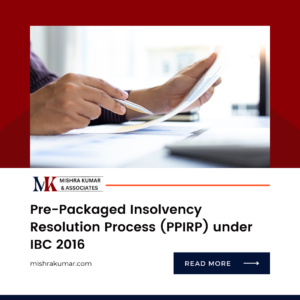Voluntary Liquidation and Winding up services
Voluntary liquidation and winding-up services are essential processes for companies that have decided to cease operations or distribute assets to creditors and shareholders. These processes involve legally and systematically dissolving a company’s affairs. In this blog, we will explore the significance of professional services in guiding companies through voluntary liquidation and winding-up processes.
INTRODUCTION
Voluntary liquidation and winding-up services are essential processes for companies that have decided to cease operations or distribute assets to creditors and shareholders. These processes involve legally and systematically dissolving a company’s affairs. In this blog, we will explore the significance of professional services in guiding companies through voluntary liquidation and winding-up processes.
ANALYSIS
Understanding Voluntary Liquidation and Winding-Up
Before we delve into the role of professional services, let’s clarify what voluntary liquidation and winding-up entail:
Voluntary Liquidation: Voluntary liquidation is initiated by the company itself, typically when it is no longer viable or wishes to cease operations. The company’s assets are realized and distributed to creditors and shareholders according to a predefined plan.
Winding-Up: Winding-up, on the other hand, can be either voluntary or compulsory. Voluntary winding-up is initiated by the shareholders, while compulsory winding-up is initiated by external parties such as creditors or regulatory authorities. The goal is to distribute assets and discharge liabilities.
Importance of Professional Services
Why are professional services crucial for companies undergoing voluntary liquidation and winding-up?
Legal Compliance: Voluntary liquidation and winding-up involve intricate legal requirements and regulatory compliance. Professionals ensure that the company adheres to all legal obligations.
Asset Realization: Skilled professionals assist in efficiently realizing the company’s assets, including valuation and sale, to maximize returns for creditors and shareholders.
Creditor Settlement: Professionals negotiate and settle outstanding debts with creditors to ensure equitable distribution of available assets.
Shareholder Communication: Effective communication with shareholders, including reporting on the liquidation process and distributing assets, is critical. Professionals facilitate this communication.
Regulatory Filings: Accurate and timely filing of required documents with regulatory authorities is essential. Professionals ensure compliance with all filing obligations.
Part 3: The Voluntary Liquidation and Winding-Up Service Process
The assistance process for companies undergoing voluntary liquidation and winding-up generally involves the following steps:
Assessment: Professionals assess the company’s financial status, assets, liabilities, and operational challenges.
Strategy Development: A liquidation or winding-up plan is crafted, outlining the steps and actions needed to carry out the process efficiently.
Execution: The plan is executed, involving asset realization, creditor negotiations, and shareholder communication.
Compliance and Reporting: Professionals ensure that all regulatory and legal requirements are met, including the submission of necessary reports and documents.
Distribution Process: Experts oversee the distribution of assets to creditors and shareholders in accordance with the predefined plan.
CONCLUSION
Voluntary liquidation and winding-up services are critical for companies looking to wind down their operations or distribute assets equitably to creditors and shareholders. Professional assistance provides the expertise and support needed to navigate the complex legal, financial, and operational challenges inherent in these processes.
As businesses evolve and circumstances change, the role of professionals in providing guidance, asset realization, creditor settlement, and regulatory compliance remains essential in ensuring a smooth and legally compliant dissolution of a company’s affairs.
FAQs
Q1: Is voluntary liquidation a suitable option for financially distressed companies?
A1: Yes, voluntary liquidation can be a suitable option for companies that are no longer viable or wish to cease operations. It provides a structured process for distributing assets to creditors and shareholders.
Q2: How are assets distributed in voluntary liquidation and winding-up processes?
A2: Assets are typically distributed in accordance with a predefined plan. Creditors with valid claims are paid first, followed by the distribution of remaining assets to shareholders.
Q3: Are there specific timelines for completing voluntary liquidation and winding-up processes?
A3: The timeline for these processes can vary based on the complexity of the case and regulatory requirements. Professionals aim to complete the process as efficiently as possible while adhering to legal obligations.
RECENT POSTS
- The implication of Stamp Duty on Scheme of Arrangement (Merger & Amalgamation):
- Pre-Packaged Insolvency Resolution Process (PPIRP) under IBC 2016
- BUY BACK OF SHARES V/S DIVIDEND
- Comprehensive comparative analysis of SEBI (Listing Obligations and Disclosure Requirements) (Second Amendment) Regulations, 2021.
- SEBI (Delisting of Equity Shares) Regulations, 2021-Imposes new responsibilities on the board of directors.

The implication of Stamp Duty on Scheme of Arrangement (Merger & Amalgamation):
The implication of Stamp Duty on Scheme of Arrangement (Merger & Amalgamation): The Scheme of Arrangement is a legal mechanism under corporate law that allows

Pre-Packaged Insolvency Resolution Process (PPIRP) under IBC 2016
Pre-Packaged Insolvency Resolution Process (PPIRP) under IBC 2016 The Insolvency and Bankruptcy Code (IBC) 2016, is a comprehensive legislation aimed at consolidating and amending laws

BUY BACK OF SHARES V/S DIVIDEND
BUY-BACK OF SHARES V/S DIVIDEND A dividend offers cash rewards to all shareholders in accordance with their stake in the company, whereas a share buyback

Comprehensive comparative analysis of SEBI (Listing Obligations and Disclosure Requirements) (Second Amendment) Regulations, 2021.
Comprehensive comparative analysis of SEBI (Listing Obligations and Disclosure Requirements) (Second Amendment) Regulations, 2021. Securities and Exchange Board of India (“SEBI”) vide notification dated May

SEBI (Delisting of Equity Shares) Regulations, 2021-Imposes new responsibilities on the board of directors.
SEBI (Delisting of Equity Shares) Regulations, 2021-Imposes new responsibilities on the board of directors. Securities and Exchange Board of India (“SEBI”) vide notification dated 10th

Summary of Insolvency and Bankruptcy Board of India (Liquidation Process) (Amendment) Regulations, 2024
Summary of Insolvency and Bankruptcy Board of India (Liquidation Process) (Amendment) Regulations, 2024 The Insolvency and Bankruptcy Board of India (IBBI) recently issued amendments to

